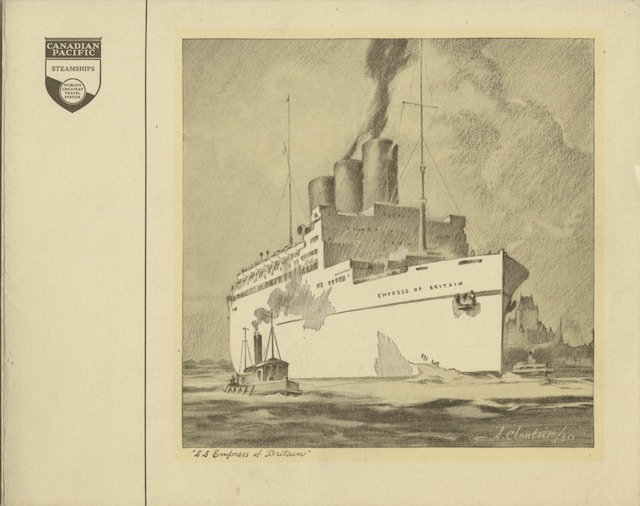“In 1931, the great White Empresses of the Canadian Pacific fleet will be joined by the Empress of Britain,” this dining car menu proudly announces. The second of three Canadian Pacific ships of that name, the ship was the first to be designed to serve in trans-Atlantic service in the summers and cruise-ship service in the winters (when the St. Lawrence Seaway was frozen). Four propellors made her the fastest ship in trans-Atlantic service, but when used as a cruise ship, two were removed, saving much fuel at only a minor cost in speed.

Click image to download a 1.2-MB PDF of this menu.
Requisitioned for troop service in World War II, the Empress was attacked by a German bomber in 1940. Nearly all of the crew and passengers were successfully evacuated and the ship was being towed to port for repair when it was attacked by a German U-boat and sunk. It was the largest troop ship sunk during the war and the largest ship sunk by a U-boat.
The cover drawing is signed “A. Cloutier,” which refers to Canadian artist Albert Edward Cloutier. Among other things, Cloutier also did the mural in the lounge below the dome in the Canadian observation car Laurentide Park.

The Empress on the St. Lawrence River in 1937. Click image for a larger view.
This particular menu was used on the Mountaineer. It is undated other than the mention of the Empress, but must have been used in 1930 or 1931. In addition to four kinds of fish — goldeye, trout, whitefish, or fish cakes — it offered steaks, lamb chops, chicken, and calf’s liver, as well as the usual eggs and omelets. Multiply prices by 11 to convert to today’s U.S. dollars.
